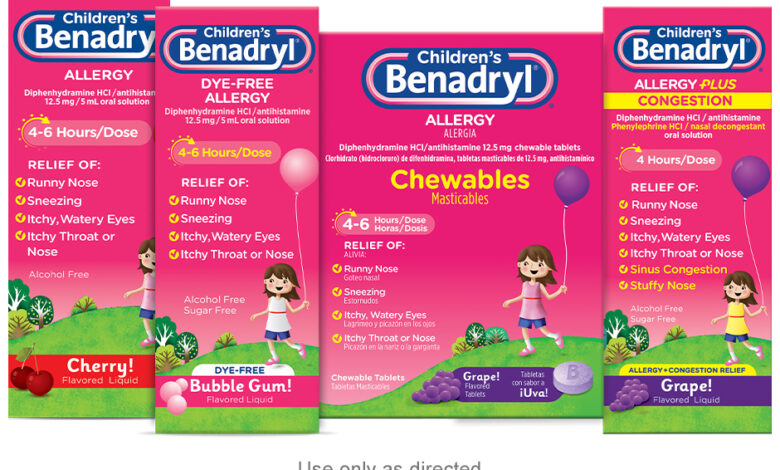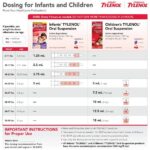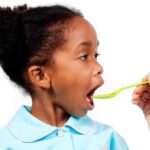Children and Infant Benadryl (Diphenhydramine) Dosing Chart

Benadryl is a brand of diphenhydramine, an over-the-counter medication that’s classified as an antihistamine. Benadryl comes in many different forms, it is used to help relieve symptoms of hay fever (seasonal allergies), other allergies, and the common cold, as well as itchy skin due to insect bites, hives, and other causes.
Benadryl is effective for decreasing itchy skin from hives. It’s often considered a first-choice treatment for hives. But although it’s effective for decreasing symptoms of seasonal allergies, Benadryl isn’t often used for this purpose. This is due to side effects such as sleepiness.
Doctors and pediatricians do not usually recommend Benadryl products for babies or infants. However, in some circumstances, they will recommend supervised use of Benadryl for infants younger than 2 years old.
Specifically, the Food and Drug Administration (FDA) warns against giving any cold or cough medicine containing an antihistamine to a child under the age of 2. According to the FDA, this type of medicine could cause serious side effects in toddlers and babies, including rapid heart rate and convulsions.
Benadryl is available in several forms, some of which contain doses suitable for children aged 6 and over. In the United States, there are no specific products available for babies, infants, or children under the age of 6.
Children and Infant Benadryl (Diphenhydramine) Dosing Chart
If your child’s doctor does direct you to give a dose of Children’s Benadryl to your toddler, it’s important to give the correct dose as directed by the pediatrician or as instructed by the label. Here’s a look at a suggested dosage chart to help guide you:
| Weight of Child | Liquid suspension* | Chewable tablets* |
| Under 20 lbs. | Follow doctor directions | do not use |
| 20 to 24 lbs. | 3.75 mL | do not use |
| 25 to 37 lbs. | 5 mL | 1 tablet |
| 38 to 49 lbs. | 7.5 mL | 1 tablet |
| *every 4–6 hours | *every 4–6 hours |
It’s also important to not give too many doses within a certain time period. Not more than six doses in a 24-hour window. However, your child’s doctor may only want you to administer one or two doses to your child, so be sure to ask.
Giving Medicine to a Child 1 Year and Older
Your attitude toward giving medicine is especially important with young children. These are some ways to give medicine. Try one that you think will work with your child. If that method does not work, try another one.
• Give the medicine straight from a pediatric measuring device. (Ask your pharmacist for one). Household spoons should not be used to measure medicine.
• Mix the medicine with a small amount (1 to 2 teaspoons) of juice or sweetened water. Give with a spoon or let your child drink it.
• Try mixing the medicine with a small amount of soft foods like ice cream, pudding, or jelly. Do not use foods your child must have, such as meat or vegetables.
• Try mixing the medicine with small amounts of food that have a strong flavor. This helps hide the taste of the medicine. Mixing with sweet or cold foods may also help.
• Explain to your child why he needs to take the medicine in words he can understand. (For example, “This medicine will make your tummy stop hurting.”)
• Whenever possible let the child choose how and when to take the medicine (or which one to take first). Let him hold the spoon, cup, or syringe and take it himself.
• Praise your child every time he takes the medicine without a struggle. (Giving a special sticker works well for some children.)
• Try to ignore your child’s behavior when he does not cooperate.
• Never give medicine right after disciplining your child. He may think the medicine is punishment.
• Never threaten your child with a “shot” if he does not take the medicine.
• Never call medicine “candy.” Call it medicine.
• Give a drink of water after your child takes the medicine.
• If you need to mix the medicine in food or liquids, ask your child’s doctor or pharmacist what foods can or cannot be used. Some food or drinks make the medicine not work well.
Comparing Measuring Spoons to Metric Measurements
Measuring Spoon Metric (1 mL = 1 cc)
1/4 teaspoon = 1 1/4 mL
1/2 teaspoon = 2 1/2 mL
3/4 teaspoon = 3 3/4 mL
1 teaspoon = 5 mL
1 ½ teaspoons = 7.8 mL
2 teaspoons = 10 mL
1 tablespoon = 15 mL
1 ounce = 30 mL
Storage of Medicine
• Store all medicine out of sight and out of reach of children.
• Make sure medicines are stored with a childproof safety cap.
• Always keep medicine in the labeled container it came in.
• If your childcare provider needs to give the medicine, ask the pharmacist for 2 labeled containers.
• If you carry the medicine in your purse, keep it in its childproof container. Keep your purse out of the reach of children.
• Do not use any medicine after the expiration date printed on the container.
• If your doctor decides the medicine is no longer needed, get rid of the remaining medicine.
• Remind guests in your home to keep their medicines out of the reach of children.
Contact your pediatrician if you have any questions.
You can find useful information on: How To Avoid Mistakes When Giving Children Medication





